ASRock X99M Extreme4 And Fatal1ty X99M Killer Review
ASRock is ready to take on EVGA in the battle for enthusiast-oriented microATX motherboards. Can the company best known for value conquer its gaming-centric competitor in overclocking and features, or will this be a pure pricing play?
Why you can trust Tom's Hardware
ASRock X99M Series Motherboard Overview
Side-by-side is the fairest way to compare two products that have as much in common as the X99M Extreme4 and Fatal1ty X99M Killer. You’ll notice, for example, that they have the same port and slot arrangements.
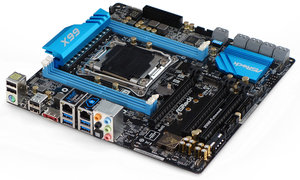
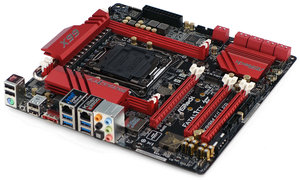
They also have the same Ultra M.2 interface taking up the second slot's space. And both boards use all four of Haswell-E's leftover PCIe 3.0 lanes to feed it. That means that both boards lack PCIe 3.0 signaling for the third slot, which is probably alright since it’s often covered up by the second card's heat sink. I'm also fine with the lack of a second slot, since every configuration requires at least one graphics card.
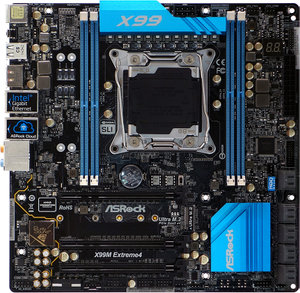
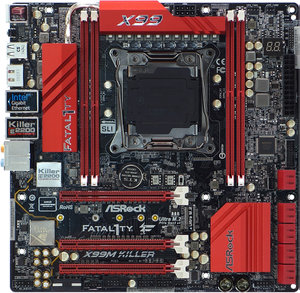
This layout gives ASRock’s matching boards a duality in marketing. Both products support CrossFire or SLI, while single graphics card users are left with a PCIe 3.0 x8 and a PCIe 2.0 x4 slot to fill. Given the platform's ability to support up to eight cores, the latter option rings “mini workstation” and “mini server” bells in my head.
Maybe it’s because I just got my bells rung, but the presence of all ten internal SATA ports also looks a little server-oriented to me. ASRock gaming boards might not appeal as enterprise solutions, but some serving needs are less mission-critical. I even have the case picked out.
Both of ASRock’s X99M motherboards share the same 12-phase voltage regulator, and I can even see mounting holes on the X99M Extreme4 for the Fatal1ty X99M Killer's extended power regulator heat sink. Using the same circuit board gives both products the same pros and cons, including a well-placed USB 3.0 header that won’t interfere with card installation and the same eight-pin (EPS/ATX) CPU12V connector that will probably get blocked in by any oversized CPU cooler. At least the latter issue isn’t a clearance/fitment issue.
Both boards shove the front-panel audio header as far as possible into the bottom-rear corner, and I’ve experienced cases (even from Lian-Li) with cables that either wouldn’t reach or barely reached. In those marginal situations, the problem was that the cable was stretched too tightly to allow installation of a card into the second or third expansion slot.
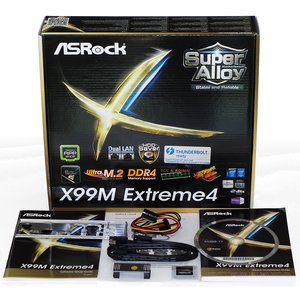
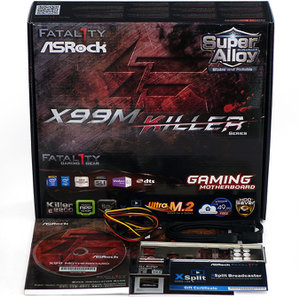
Remember on the previous page when I mentioned the Killer added goodies? For exactly $19 (not $20) more than the X99M Extreme4, the Fatal1ty X99M Killer provides a three-month premium membership certificate for XSplit Gamecaster, a $26.85 value. That’s in addition to its upgraded Killer Ethernet controller.
Get Tom's Hardware's best news and in-depth reviews, straight to your inbox.
Current page: ASRock X99M Series Motherboard Overview
Prev Page Motherboards In Small Packages Next Page ASRock X99M Firmware-
Crashman Reply14730663 said:Just a quick error,
Chipset for all X99 boards is listed as Z97
Fixed, thanks. In case you're wondering, that type of error occurs from continuously recycling tables. -
HideOut To bad the killer model seems to suffer a high markup at amazon according to the green link.Reply -
Lutfij Nice work Thomas! Guess you were sitting on this board in your lab for some time now huh ? :D :)Reply
Anyways, good writeup and keep em coming. Now to find someone crazy enough to shell out on a X99 platform inside an N200 ... hmmm. -
Crashman Reply14733470 said:Nice work Thomas! Guess you were sitting on this board in your lab for some time now huh ? :D :)
Anyways, good writeup and keep em coming. Now to find someone crazy enough to shell out on a X99 platform inside an N200 ... hmmm.
It takes a couple weeks to get stuff published, unless there's an NDA and everyone puts everything else to the side. These would be among the stuff put to the side though :(
At least you knew it was coming :) -
Mac266 Reply14730952 said:
Fixed, thanks. In case you're wondering, that type of error occurs from continuously recycling tables.
Onya Crash. Nice review as well. -
m32 The ASRock Fatal1ty X99M Killer LGA 2011-v3 is selling for $250 ($230 AMIR) on Newegg. Amazon currently isn't selling it on Amazon, and 3rd parties are known to over mark products.Reply -
RedJaron Tom, what would it take to get ASRock to start putting more 4-pin fan headers on their boards? I love their products, been using a Z68 Ex4 Gen3 for three years and just built a friend's machine on an H97M Pro4. But I love quiet PCs. Having PWM signalling for all the chassis fans, and not just the CPU coolers, means it runs as quiet as possible during web surfing and other downtime.Reply
